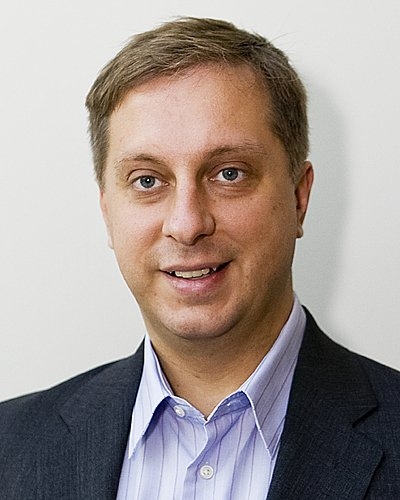In 2007, MIT researchers announced that they had discovered a novel way of transmitting electricity without the use of wires. Now, the researchers have demonstrated that the system’s efficiency at transmitting energy improves significantly when it is used to charge multiple devices at the same time.
The new work, reported in a paper in Applied Physics Letters earlier this year, has also demonstrated a system much closer to one that could be used to power typical consumer electronic devices. In the original proof-of-concept in 2007, both the transmitter and receiver consisted of coils that were about two feet across. These two units were placed more than six feet apart and were used to light a 60-watt bulb — even with people sitting in between. But the new system uses a slightly larger transmitter, with receivers that are only about a foot across – moving closer to a size that could eventually be built into a PC or a television set. The transmitting coil could be built into a wall or ceiling, the researchers say, and the transfer of power has been shown to work over distances comparable to the size of an ordinary room.
André Kurs, a doctoral student in MIT’s Department of Physics and the lead author of the recent paper, says this reduction in size of the receiving coil is an ongoing process. With some more work on further reducing the coil’s diameter and thickness, “we could embed it in a portable device,” he says.
The basic underlying principle for transmitting power wirelessly goes back more than a century to the work of Nikola Tesla and other pioneers of electricity, but the MIT team invented a way of making the process far more efficient and practical.
The system works by creating a strong electromagnetic resonance between the sending and receiving coils — similar to the way a tuning fork can start vibrating when exposed to a sound of exactly the right frequency, or the way a radio antenna can be tuned to just the frequency of a single station out of the hundreds that are simultaneously broadcasting their signals. In this case, the magnetic resonance between the two coils is unaffected by objects in between the coils, and by the same token objects between the coils — including people — are not affected by the magnetic fields.
The key to that advance — that is, the ability to transmit useful amounts of power using coils of a reasonable size — was found in 2005 by MIT assistant professor of physics Marin Soljačić, who developed the idea along with Kurs, students Aristeidis Karalis SM ’03 ScD ’08 (now a postdoctoral researcher) and Robert Moffatt ’09, and physics professors Peter Fisher and John Joannopoulos.
Although predicted by theory, the increase in efficiency when powering two devices at the same time had not been previously demonstrated in experiments. The team that carried out the recent work — Kurs, Moffat and Soljačić — found that when powering two devices at once, which individually could achieve less than 20 percent efficiency in power transfer, the combined efficiency climbed to more than 30 percent. The two receiving coils resonate with each other as well as with the transmitting coil, and help to reinforce the strength of the magnetic field. Kurs says that the efficiency should continue to rise as more devices are added, climbing toward a theoretical limit of 100 percent. The research has been funded by the NSF, the Army Research Office, DARPA, and a grant from 3M.
The amount of power transmitted in the latest experiment was on the order of 100 watts, but Kurs says that is only limited by the amplifier used for the transmitting coil, and can easily be increased. “It could be several hundred watts, or a kilowatt,” he says — enough to power several typical household devices at once, such as lamps, computers or television sets. “You could feed power to a medium-sized room, and power a dozen devices,” he says.
The researchers set up a company in 2007, called WiTricity, to develop the invention and eventually bring it to market. Most of the Watertown-based company’s principals and board of advisors are MIT professors, students, or alumnae. The company originally estimated it would take several years to develop a commercial product, and have “been making good progress. I think it’s reasonably close,” says Kurs, who works at the company while completing his doctorate. No further breakthroughs are required, the researchers say, just continued engineering work to find the optimum design of the coils and the electrical control systems.
In addition to working on reducing the size of the receiving coils, the researchers are also trying to improve the system for tuning the devices to achieve maximum efficiency. In the laboratory tests, they spent considerable time manually tuning each part of the system, but for a practical consumer product this process will have to be fully automated. “It does get a little harder to tune multiple devices,” Kurs says.
A number of other companies have independently jumped on the bandwagon and begun to develop similar wireless power systems, including large companies like microchip maker Intel and electronics giant Sony. “Quite a few companies have reproduced the original results,” Kurs says.
And Tesla, whom the researchers acknowledge in the footnotes to their papers, would no doubt be pleased by the progress. “He did have the notion,” Kurs says, “but in practice it’s a hard thing to make work. You need a good model of how your coupling varies with distance and how to minimize the losses in the system, and people didn’t have a good understanding of it at the time.”
Latest research shows that efficiency improves when multiple devices are charged at once.
Publication Date:

Credits:
Graphic: Christine Daniloff

Caption:
Assistant professor of physics Marin Soljačić
Credits:
Photo courtesy MacArthur Foundation





